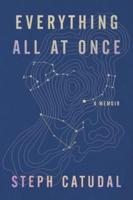Publisher's Synopsis
If the woods call your name, then you should definitely try to follow. But if you can't clear your schedule right now, at least read this book about life in the wilderness before there were cellphones.
The setting is deep in a field of wildflowers, far from any city. Two anachronistic romantics have heeded the call of the wild and journeyed to Alaska for an encounter with adventure. Kate, a flower child from Hawaii, has come to the arctic to "see a winter" and perhaps to find a harmonious world where nakedness feels natural. Tim, an infantry soldier with a gentle nature, simply wants to build his own log home and live life the way he wishes, like Jeremiah Johnson.
After joining work crews in a Pipeline construction camp, they start their life adventure together by eloping and setting off for Vermont. They get as far as the Kenai Peninsula, where a dirt road leads them up a mountain to a beautiful chunk of wilderness. and--with just one look and absolutely no forethought--Tim and Kate begin a twelve year pioneering adventure, taking Ralph Waldo Emerson's hypothetical essay on self-reliance, and putting their hearts and muscle into it.
In Cutting's "Sleeping Moose Saga trilogy, readers experience the cumulative effects of uncompromising weather, the travails of living up a long, impossible road, and the uncertainty of sharing their world with the handful of unfathomable neighbors who live at the end of that road.
Part One, "Where the Moose Slept," covers the years 1976 to1979, as Tim and Kate build their house and begin a family. The hardships are many, but life at Victory Garden still seems sweet.
Part Two of the saga, "The Winter of '79," describes the events of one particularly trying year, in which Tim nearly succumbs to illness and injury, while "cabin fever" overtakes Kate, who--except for their infant daughter Atwood--sits isolated and alone on a mountain for more than one hundred difficult days. With luck, Tim will make it home each night.
As a work of "creative non-fiction," the the events are true, however the characters and the towns of Footprint and Sleeping Moose are fictitious. Letters home have been included in this "Winter" volume and photographs (more than 100) as well as journal entries illustrate the feelings of a homesteading woman in remote isolation.
Because this pioneering adventure takes place shortly before the invention of silicon-chip cell-phones, solar panels and "quad" ATVs revolutionized our world, millennial readers will be able to vicariously experience rustic living with outmoded tools, while seniors who have lived their own pre-tech lives may find amusement in the solutions arrived at by the "cheechako" greenhorns.
For pure recreation, Part One is a perfect weekend diversion into raw nature and unanticipated transportation misadventures. Part Two (The Winter of '79) is not as easy to digest. Instead, readers share in Kate's cabin fever and concern for her family's survival. On a utopian quest, these pioneers have naïvely pitted their idealism against the searing realities of our world as it really is. Eventually, one truth or the other must give way.








